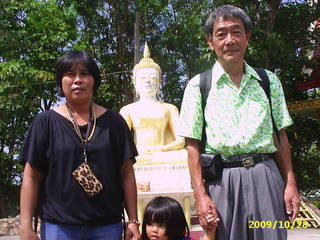2014年04月25日
閣議の議事録―何のための公開なのか
April 23, 2014
EDITORIAL: Abe misses the point in disclosing minutes of Cabinet meetings
閣議の議事録―何のための公開なのか
For the first time since Japan adopted the Cabinet system in 1885, the government on April 22 disclosed to the public the minutes of a Cabinet meeting and a following ministerial meeting, both held on April 1.
“This is a historic first step,” Prime Minister Shinzo Abe gloated over the disclosure. New Komeito leader Natsuo Yamaguchi called it an “epoch-making” attempt.
これが、安倍首相が胸を張る「歴史的な一歩」か。これが、公明党の山口那津男代表が言う「画期的」な試みなのか。
1885(明治18)年に内閣制度が発足して以来初めて、閣議と閣僚懇談会の議事録が公開された。
We welcome the information disclosure itself. However, the manner in which this was done was hardly satisfactory, and we definitely do not share the enthusiasm of Abe and Yamaguchi.
そのこと自体は歓迎したいが、公開のあり方は到底満足できるものではない。
At the April 1 meeting, the Cabinet effectively lifted the nation’s self-imposed ban on weapons exports and replaced it with the new “three principles of defense equipment transfer.” The decision represented a major turning point in Japan’s post-World War II pacifist policy that was grounded in the spirit of the Constitution.
公開された4月1日の閣議では、「武器輸出三原則」に変わる「防衛装備移転三原則」が決定された。憲法の理念に基づく、戦後日本の平和主義のひとつの重要な転換点である。
According to the minutes, however, the minsters in charge merely “expressed their resolve” to apply the new principles appropriately, while Abe was quoted as saying, “I think it is most important to explain the purpose of the new principles in a way the people can understand, and make efforts to gain their understanding.”
ところが議事録によると、閣議では関係閣僚が、新原則の適切な運用に関して「決意表明」するにとどまっている。安倍首相も「新たな原則の趣旨を分かりやすく説明し、国民的理解を促進することが非常に重要であると考えております」。
This meeting ended in only 12 minutes, and the entire transcript is written on four pages of A4-size paper. Is this the reality of a Cabinet meeting, which serves as the supreme government session for making final policy decisions? The sheer absence of substance is almost incredible.
所要時間12分。A4判で実質4枚。内閣の最高かつ最終的な意思決定の場である閣議の現実がこれなのか。にわかには信じがたい空疎さである。
Granted, it has often been said that Cabinet meetings are extremely formalized and that in-depth discussions rarely take place even at the more casual ministerial meetings that follow.
かねて閣議は極めて形式的で、閣僚懇談会でも突っ込んだ議論はほとんどされないと言われてはきた。
But if the disclosed minutes are an indication of how little the Cabinet ministers have to say about policies, then the fundamental question that arises is, “Where are the nation’s policy decisions really made?”
しかし本当にこの程度のやりとりしか行われていないとすると、この国の意思決定はいったいどこで行われているのか。
根本的な疑問が頭をもたげてくる。
What makes the situation even more frustrating is that we have no means of verifying whether the disclosed minutes accurately reflect what was really discussed during the Cabinet meeting.
ただ問題はそれ以前に、本当にこの程度の発言しか出ていないのか、検証のしようがないことだ。
The disclosure is based on the Cabinet’s decision, and it is not a legal requirement.
公開は法律で義務づけられたものではなく、閣議決定に基づいている。
In fact, the “minutes” are actually nothing more than notes taken by the deputy chief Cabinet secretary and other officials present at the meeting. As such, we have no idea exactly what standards are being followed in the compilation of the minutes.
公開されるのは議事録といっても陪席した官房副長官らが発言要旨を記録したメモであり、どのような基準に基づきまとめられているのかわからない。
The prime minister has said, “From the standpoint of information disclosure, it is desirable to swiftly make public the information under the current laws.” But Abe is missing the whole point.
首相は「現行法の下で速やかに公表した方が情報公開の観点で望ましい」としているが、何か勘違いしていないか。
The compilation and disclosure of minutes is not a “public service.” Article 1 of the law on management of public records and archives defines public records as “intellectual resources to be shared by the people in supporting the basis of sound democracy.” The purpose of this law is to keep records of who made the decisions and why, so that they can be examined by future generations.
議事録の作成と公開は「サービス」ではない。公文書管理法第1条は、公文書を「健全な民主主義の根幹を支える国民共有の知的資源」と位置づける。誰が、なぜそのような意思決定をしたのか、過程を記録し後世の検証に堪えられるようにする。
So long as the government neglects its responsibility to history, there is no point whatsoever in disclosing information that cannot be verified, no matter how swiftly the government makes it public.
その歴史に対する責任を等閑視し、検証不能なものをどんなに速やかに公開したところで、何の意味もない。
The public records management law needs to be revised so that not only Cabinet meetings and ministerial meetings but also all other meetings that affect vital policy decisions, such as meetings of the Japanese version of the U.S. National Security Council, will be required to keep their minutes. The minutes should be disclosed to the public in principle after a certain number of years.
公文書管理法を改正し、閣議や閣僚懇のほか国家安全保障会議(日本版NSC)など重要な意思決定に関わる会議も議事録作成を義務づける。一定の年月が経てば原則公開する。
Only when such changes have been made can the prime minister rightfully say that a “historic first step” has been taken.
そこに踏み込んで初めて、「歴史的な一歩」が刻まれる。
--The Asahi Shimbun, April 23
EDITORIAL: Abe misses the point in disclosing minutes of Cabinet meetings
閣議の議事録―何のための公開なのか
For the first time since Japan adopted the Cabinet system in 1885, the government on April 22 disclosed to the public the minutes of a Cabinet meeting and a following ministerial meeting, both held on April 1.
“This is a historic first step,” Prime Minister Shinzo Abe gloated over the disclosure. New Komeito leader Natsuo Yamaguchi called it an “epoch-making” attempt.
これが、安倍首相が胸を張る「歴史的な一歩」か。これが、公明党の山口那津男代表が言う「画期的」な試みなのか。
1885(明治18)年に内閣制度が発足して以来初めて、閣議と閣僚懇談会の議事録が公開された。
We welcome the information disclosure itself. However, the manner in which this was done was hardly satisfactory, and we definitely do not share the enthusiasm of Abe and Yamaguchi.
そのこと自体は歓迎したいが、公開のあり方は到底満足できるものではない。
At the April 1 meeting, the Cabinet effectively lifted the nation’s self-imposed ban on weapons exports and replaced it with the new “three principles of defense equipment transfer.” The decision represented a major turning point in Japan’s post-World War II pacifist policy that was grounded in the spirit of the Constitution.
公開された4月1日の閣議では、「武器輸出三原則」に変わる「防衛装備移転三原則」が決定された。憲法の理念に基づく、戦後日本の平和主義のひとつの重要な転換点である。
According to the minutes, however, the minsters in charge merely “expressed their resolve” to apply the new principles appropriately, while Abe was quoted as saying, “I think it is most important to explain the purpose of the new principles in a way the people can understand, and make efforts to gain their understanding.”
ところが議事録によると、閣議では関係閣僚が、新原則の適切な運用に関して「決意表明」するにとどまっている。安倍首相も「新たな原則の趣旨を分かりやすく説明し、国民的理解を促進することが非常に重要であると考えております」。
This meeting ended in only 12 minutes, and the entire transcript is written on four pages of A4-size paper. Is this the reality of a Cabinet meeting, which serves as the supreme government session for making final policy decisions? The sheer absence of substance is almost incredible.
所要時間12分。A4判で実質4枚。内閣の最高かつ最終的な意思決定の場である閣議の現実がこれなのか。にわかには信じがたい空疎さである。
Granted, it has often been said that Cabinet meetings are extremely formalized and that in-depth discussions rarely take place even at the more casual ministerial meetings that follow.
かねて閣議は極めて形式的で、閣僚懇談会でも突っ込んだ議論はほとんどされないと言われてはきた。
But if the disclosed minutes are an indication of how little the Cabinet ministers have to say about policies, then the fundamental question that arises is, “Where are the nation’s policy decisions really made?”
しかし本当にこの程度のやりとりしか行われていないとすると、この国の意思決定はいったいどこで行われているのか。
根本的な疑問が頭をもたげてくる。
What makes the situation even more frustrating is that we have no means of verifying whether the disclosed minutes accurately reflect what was really discussed during the Cabinet meeting.
ただ問題はそれ以前に、本当にこの程度の発言しか出ていないのか、検証のしようがないことだ。
The disclosure is based on the Cabinet’s decision, and it is not a legal requirement.
公開は法律で義務づけられたものではなく、閣議決定に基づいている。
In fact, the “minutes” are actually nothing more than notes taken by the deputy chief Cabinet secretary and other officials present at the meeting. As such, we have no idea exactly what standards are being followed in the compilation of the minutes.
公開されるのは議事録といっても陪席した官房副長官らが発言要旨を記録したメモであり、どのような基準に基づきまとめられているのかわからない。
The prime minister has said, “From the standpoint of information disclosure, it is desirable to swiftly make public the information under the current laws.” But Abe is missing the whole point.
首相は「現行法の下で速やかに公表した方が情報公開の観点で望ましい」としているが、何か勘違いしていないか。
The compilation and disclosure of minutes is not a “public service.” Article 1 of the law on management of public records and archives defines public records as “intellectual resources to be shared by the people in supporting the basis of sound democracy.” The purpose of this law is to keep records of who made the decisions and why, so that they can be examined by future generations.
議事録の作成と公開は「サービス」ではない。公文書管理法第1条は、公文書を「健全な民主主義の根幹を支える国民共有の知的資源」と位置づける。誰が、なぜそのような意思決定をしたのか、過程を記録し後世の検証に堪えられるようにする。
So long as the government neglects its responsibility to history, there is no point whatsoever in disclosing information that cannot be verified, no matter how swiftly the government makes it public.
その歴史に対する責任を等閑視し、検証不能なものをどんなに速やかに公開したところで、何の意味もない。
The public records management law needs to be revised so that not only Cabinet meetings and ministerial meetings but also all other meetings that affect vital policy decisions, such as meetings of the Japanese version of the U.S. National Security Council, will be required to keep their minutes. The minutes should be disclosed to the public in principle after a certain number of years.
公文書管理法を改正し、閣議や閣僚懇のほか国家安全保障会議(日本版NSC)など重要な意思決定に関わる会議も議事録作成を義務づける。一定の年月が経てば原則公開する。
Only when such changes have been made can the prime minister rightfully say that a “historic first step” has been taken.
そこに踏み込んで初めて、「歴史的な一歩」が刻まれる。
--The Asahi Shimbun, April 23
【このカテゴリーの最新記事】
-
no image
-
no image
-
no image
-
no image
-
no image
この記事へのコメント
コメントを書く





